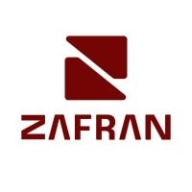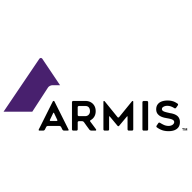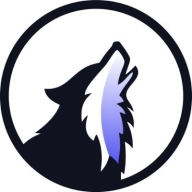


Armis and Vicarius vRx compete in the cybersecurity domain, focusing on asset and vulnerability management. Armis leads with its extensive asset visibility, while Vicarius vRx excels in advanced vulnerability management, prioritizing proactive defenses over broader visibility.
Features: Armis provides comprehensive asset visibility, real-time monitoring, and threat detection across IT and OT environments. It offers enhanced device tracking, allowing for precise asset management and risk assessment. Vicarius vRx focuses on vulnerability management with preemptive protection through patchless mitigation. Its agent-based scanning delivers consistent vulnerability discovery and risk prioritization, while third-party software patching adds an extra layer of defense.
Room for Improvement: Armis could enhance its vulnerability management capabilities and streamline its threat detection algorithms for more efficient resource utilization. Flexibility in integration with various cybersecurity tools would benefit its user experience. Vicarius vRx can refine user interface elements to improve navigation and scheduling options. Expanding real-time support would enhance customer experience, and increasing customization options for virtualized patching could prove beneficial.
Ease of Deployment and Customer Service: Armis offers both cloud-based and on-premise deployment options, praised for their simplicity and robust customer support. Vicarius vRx, with its cloud-native approach, is celebrated for its quick integration and straightforward deployment process, which often receives commendation for efficiency and ease of setup.
Pricing and ROI: Armis may involve a higher initial cost, attributed to its comprehensive asset management features but is known for delivering significant ROI. Vicarius vRx offers a more economical initial investment, focusing on efficient vulnerability management. Its targeted approach to vulnerability prioritization often results in notable cost savings and reduced management overhead.



| Company Size | Count |
|---|---|
| Small Business | 4 |
| Large Enterprise | 6 |
| Company Size | Count |
|---|---|
| Small Business | 11 |
| Midsize Enterprise | 7 |
| Large Enterprise | 3 |
Zafran Security integrates with existing security tools to identify and mitigate vulnerabilities effectively, proving that most critical vulnerabilities are not exploitable, optimizing threat management.
Zafran Security introduces an innovative operating model for managing security threats and vulnerabilities. By leveraging the threat exposure management platform, it pinpoints and prioritizes exploitable vulnerabilities, reducing risk through immediate remediation. This platform enhances your hybrid cloud security by normalizing vulnerability signals and integrating specific IT context data, such as CVE runtime presence and internet asset reachability, into its analysis. No longer reliant on patch windows, Zafran Security allows you to manage risks actively.
What are the key features of Zafran Security?
What benefits can users expect from Zafran Security?
In industries where security is paramount, such as finance and healthcare, Zafran Security provides invaluable protection by ensuring that only exploitable vulnerabilities are addressed. It allows entities to maintain robust security measures while allocating resources efficiently, fitting seamlessly into existing security strategies.
Armis is a comprehensive cybersecurity solution used for continuous monitoring and threat detection across IT and IoT devices. It excels in spotting vulnerabilities, managing device compliance, and tracking assets to enhance security protocols and network management. Key features include real-time threat detection, comprehensive visibility, and granular risk assessments. Armis boosts organizational productivity by streamlining workflows and enhancing operational accuracy.
Vicarius vRx automates patching and vulnerability mitigation with patchless protection, appreciated for effective third-party app patching and vulnerability prioritization. The platform offers streamlined management via intuitive dashboards, consolidating vulnerability discovery and remediation.
Vicarius vRx streamlines the patching and vulnerability mitigation process, delivering automation through patchless protection. It is favored for its ability to handle third-party applications effectively while providing vulnerability prioritization. The platform's intuitive dashboards allow for efficient management, consolidating vulnerability discovery and remediation efforts. Users note the robust scripting engine and supportive community as significant assets in mitigating critical threats, reducing manual effort and remediation time. Despite the strengths, enhancements in areas like automating patchless solutions, simplifying the login process, and refining networking vulnerability scanning capabilities are needed. The patch update process, reporting, and scripting functionalities require improvements. Name changes have resulted in some confusion, and additional filtering options are desired, along with better cloud integration and system feedback on update statuses. Logging options and mobile device management support are sought after by organizations.
What are the key features of Vicarius vRx?Managed service providers utilize Vicarius vRx for compliance needs, focusing on PCI and HIPAA requirements, vulnerability management, and patching. They use it extensively for patch management, covering both Microsoft and third-party updates, and for centralized update management. It aids in achieving visibility and automation, ensuring quick application of necessary patches across numerous assets while enhancing cybersecurity effectiveness with its network functionality and audit compliance features.
We monitor all Risk-Based Vulnerability Management reviews to prevent fraudulent reviews and keep review quality high. We do not post reviews by company employees or direct competitors. We validate each review for authenticity via cross-reference with LinkedIn, and personal follow-up with the reviewer when necessary.